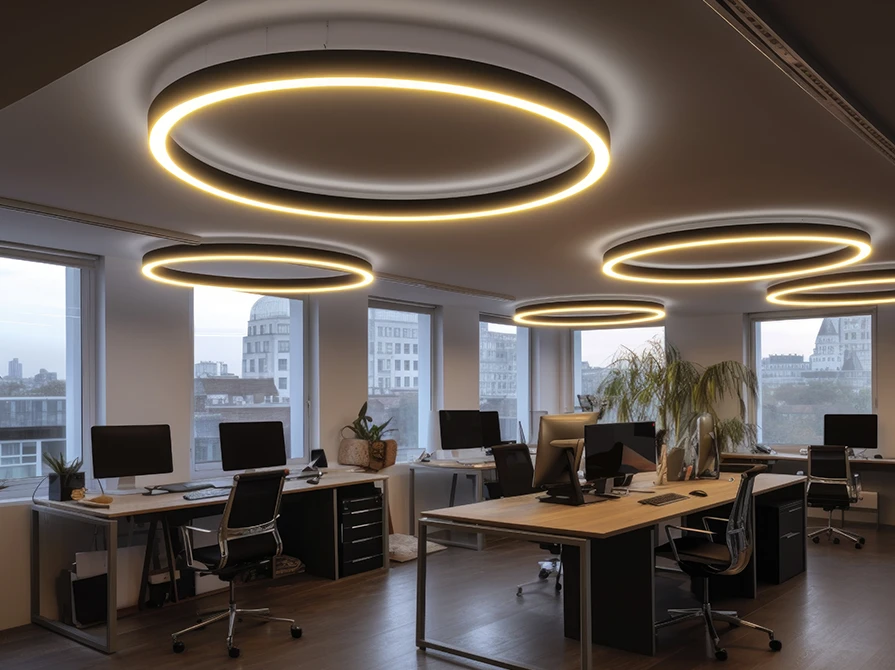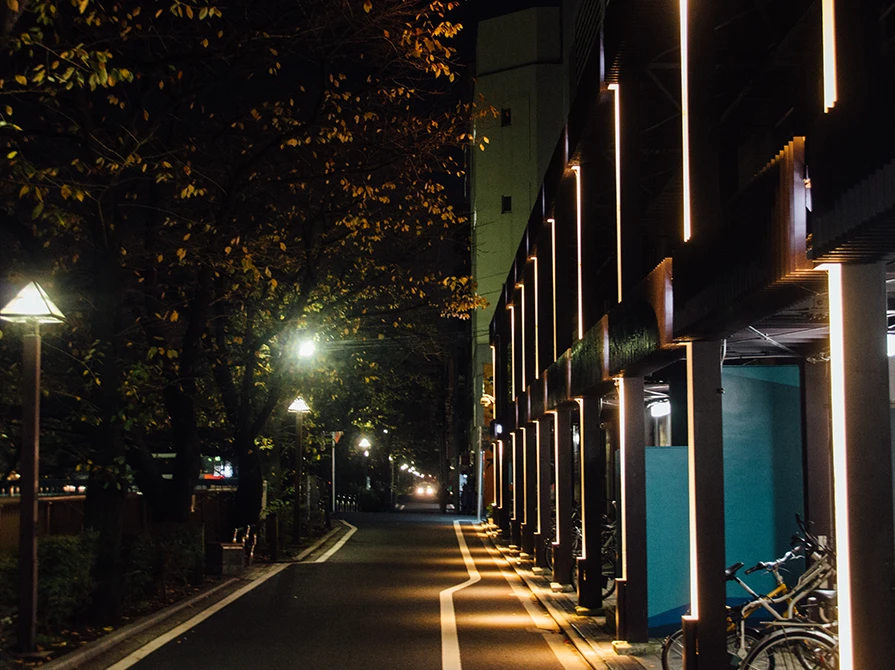


In the competitive realm of retail, visual merchandising plays a pivotal role in captivating customers and driving sales. Among the myriad elements that contribute to an effective visual merchandising strategy, lighting stands out as a potent tool. Well-executed lighting strategies can transform a retail space, accentuating products, setting the mood, and creating a memorable shopping experience. This blog explores the multifaceted potential of visual merchandising with strategic lighting, examining how retailers can leverage illumination to enhance brand identity, engage customers, and boost sales.
Setting the Stage
Lighting serves as the stage on which the drama of visual merchandising unfolds. The careful orchestration of light not only showcases products but also influences customer perception, mood, and behavior. Adequate and well-directed lighting ensures that products are visible and easily distinguishable. Whether highlighting specific merchandise or creating a well-lit ambiance, visibility is the foundation of effective visual merchandising.
Creating Ambiance
The ambiance of a retail space significantly impacts the overall shopping experience. Lighting plays a crucial role in crafting an atmosphere that aligns with the brand identity and resonates with the target audience. Strategic lighting choices can evoke specific moods and emotions. Warm, ambient lighting may create a cozy and inviting atmosphere, while bright, focused lighting can convey energy and excitement. The interplay of light and shadow adds depth, intrigue, and a sense of drama to the retail environment.
Brand Identity and Consistency
Lighting is a powerful tool for expressing and reinforcing a brand's identity. Consistent lighting across various touchpoints, from storefronts to interior displays, helps create a unified and memorable brand experience. The choice of lighting colors can significantly impact how customers perceive a brand. For example, a luxury brand might use warm, golden lighting to convey sophistication, while a tech-focused brand may opt for cooler, modern tones. Ensure that the lighting strategy aligns with the brand's identity across online and offline channels. Consistent use of lighting in both physical stores and digital platforms contributes to a seamless and recognizable brand presence.
Visual Hierarchy and Storytelling
Lighting is instrumental in creating a visual hierarchy within a retail space. It guides customers through a curated journey, emphasizing key products and telling a compelling story that resonates with their aspirations. Use focused lighting to create focal points within the store, directing customers' attention to specific products or displays. This not only aids in storytelling but also influences purchasing decisions by highlighting featured items. Adapt lighting strategies to align with seasonal or thematic merchandising. Whether it's warm, inviting lighting for a winter holiday display or vibrant, energetic lighting for a summer-themed collection, storytelling through lighting enhances the overall customer experience.
Highlighting Featured Products
One of the primary objectives of visual merchandising is to draw attention to featured products or promotions. Strategic lighting serves as a spotlight, directing customers' focus to specific areas within the store. Use accent lighting, such as spotlights or track lighting, to highlight key displays or featured merchandise. The contrast created by accent lighting draws the eye and emphasizes the importance of the showcased products. Implement dynamic lighting displays that change periodically to showcase different products. This keeps the visual merchandising dynamic and encourages repeat visits as customers are curious to see what new items are being highlighted.
Creating Zones and Pathways
Well-defined zones and pathways guide customers through the store, creating a natural flow and encouraging exploration. Lighting can be used strategically to delineate these areas and enhance the overall navigation experience. Illuminate pathways with ambient lighting to guide customers smoothly through different sections. Consider using softer lighting along pathways to create a sense of continuity and encourage a leisurely exploration of merchandise. Differentiate zones within the store using distinct lighting schemes. For example, a tech zone may feature cooler, futuristic lighting, while a cozy reading nook could be bathed in warm, inviting light. This not only enhances the thematic appeal but also aids in product segmentation.
Playing with Color Temperature
Color temperature, measured in Kelvin (K), influences the perceived warmth or coolness of light. Leveraging a range of color temperatures allows retailers to evoke specific emotions and enhance the overall aesthetic appeal of the store. Warm lighting (lower Kelvin values, around 2700K) creates a cozy and intimate ambiance, ideal for showcasing home goods or fashion items. On the other hand, cool lighting (higher Kelvin values, around 4000K) imparts a modern and energetic feel, suitable for tech or contemporary fashion displays. Consider the Color Rendering Index (CRI) of light sources, which measures how accurately they render colors. Opt for lighting with high CRI to ensure that the true colors of products are represented, enhancing their visual appeal.
Utilizing Dynamic Lighting Controls
Dynamic lighting controls provide retailers with the flexibility to adapt the store's ambiance throughout the day or in response to specific events. Automated controls, timers, and programmable systems contribute to a dynamic and responsive visual merchandising strategy. Incorporate daylight harvesting systems that adjust artificial lighting based on natural light levels. This not only enhances energy efficiency but also maintains a consistent and balanced lighting environment. Customize lighting for specific events or promotions. For example, soft and ambient lighting can create a romantic atmosphere for a Valentine's Day display, while vibrant and energetic lighting may suit a product launch or a flash sale.
Interactive and Smart Lighting
The integration of interactive and smart lighting elements adds an engaging and futuristic dimension to visual merchandising. Interactive displays and lighting that respond to customer interactions create a memorable and immersive shopping experience. Incorporate smart lighting elements that respond to customer interactions. For instance, a touch-sensitive display could trigger changes in lighting colors or intensity, inviting customers to actively engage with the merchandise. Leverage smart technologies to offer personalized lighting experiences. Beacons or mobile apps can enable customers to control the lighting around specific displays, tailoring their shopping environment to match their preferences.
In the grand theater of retail, where products take center stage and customers are the discerning audience, the strategic use of lighting emerges as the masterful director, orchestrating a symphony of visual enchantment. As we conclude our exploration into the realm of visual merchandising illuminated by strategic lighting strategies, it's evident that this dynamic interplay is more than a mere lighting solution; it's a transformative force that shapes perceptions, tells compelling stories, and ultimately drives the success of retail endeavors.
Through this blog, we've explored the nuances of lighting's impact on brand identity, visual hierarchy, and also its ability to create conducive environments and tell interesting stories. Lighting isn't just about brightness; it's about creating memorable moments, sparking emotions, and building connections between brands and their audience. Contact us to know more about how Wipro Lighting Solutions can help you reap the maximum benefits of visual merchandising through innovative lighting strategies.







